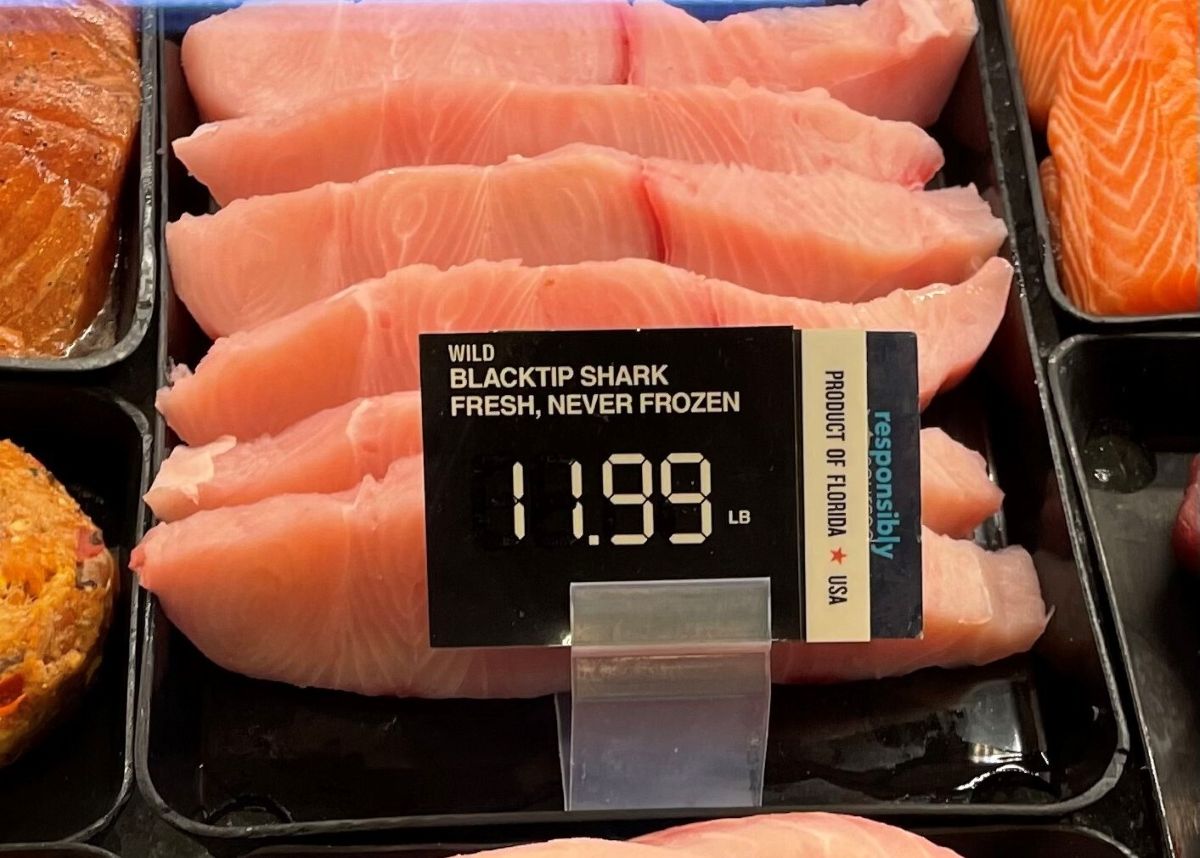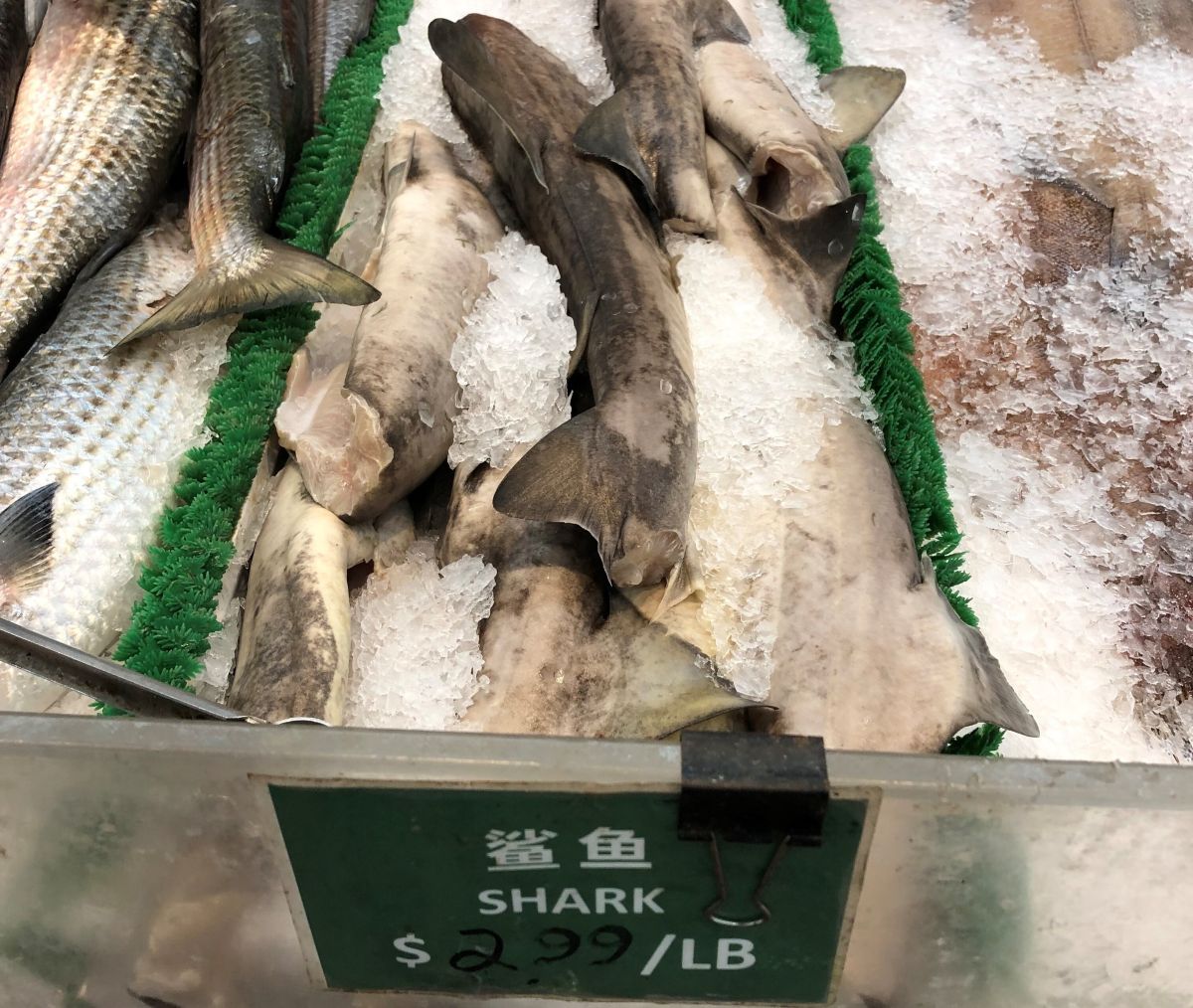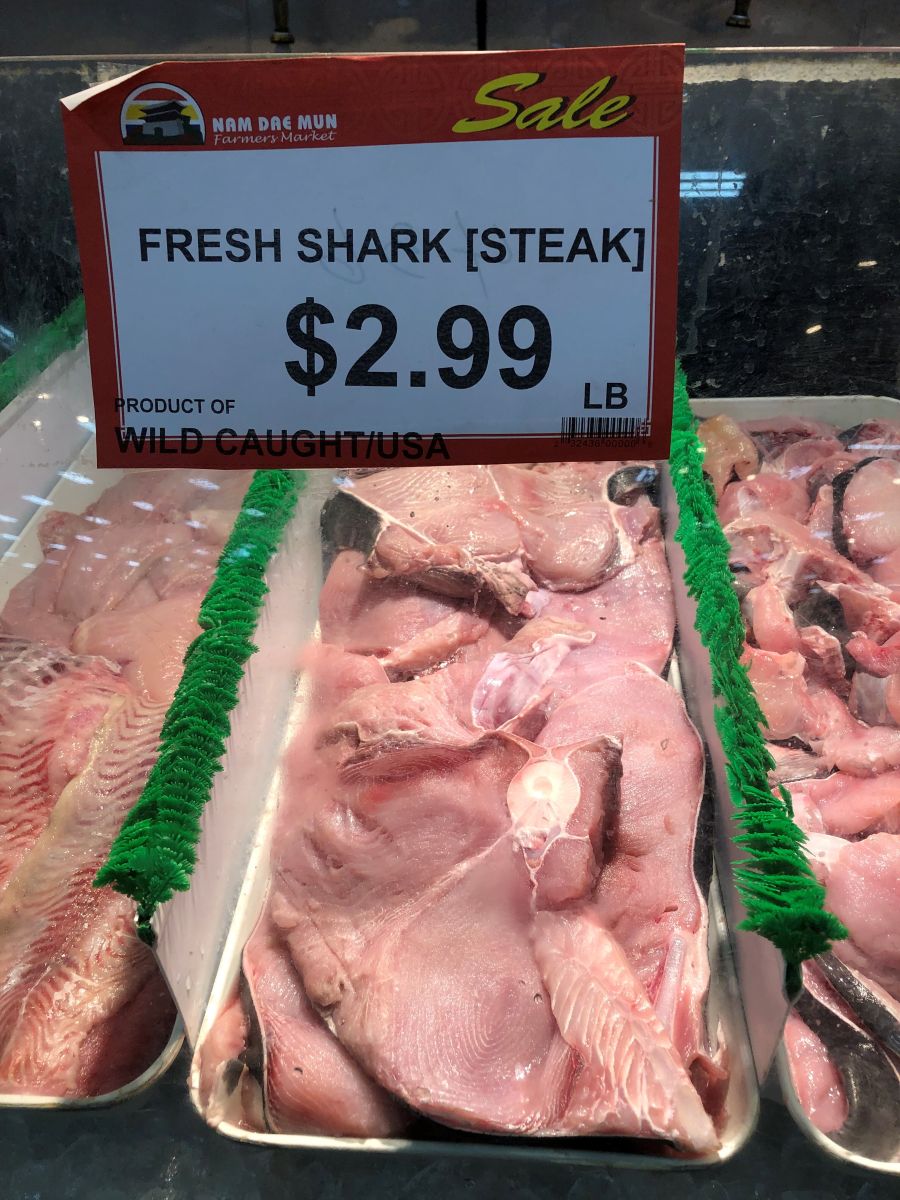
Those slabs of meat labeled “shark” on display in grocery stores and seafood markets might be from a critically endangered species and contain significant levels of mercury, according to a new study.
The University of North Carolina Chapel Hill paper, “Sale of critically endangered sharks in the United States” was published Tuesday in Frontiers in Marine Science journal. The study was funded by the university and the National Science Foundation.
Supporter Spotlight
Students in the university’s undergraduate-level seafood forensic course analyzed the DNA of 29 shark meat samples collected from 19 filets purchased in grocery stores, seafood markets and Asian specialty markets, mostly in North Carolina, and from 10 products called “jerky” that was ordered online.
Out of the samples, 27 “were ambiguously labeled as shark or mako shark but not as a specific species.” Of the two samples that were labeled, one was shortfin shark mislabeled as blacktip shark, and the other was correctly labeled.
The students identified 11 different species, three of which the Union for Conservation of Nature has designated as critically endangered: great hammerhead, scalloped hammerhead and tope.
“Previous studies have found that the first two species contain very high levels of mercury, illustrating the implications of seafood mislabeling for human health. The availability of shark meat in U.S. grocery stores is surprising given the dramatic decline of shark populations globally,” the authors wrote. “Moreover, the fact that nearly all shark meat is labeled ambiguously or incorrectly amplifies the problem. Accurate, verified product labels for shark meat would benefit consumers and shark conservation efforts, and should be a priority for the seafood industry.”
Savannah Ryburn, the lead author of the study, is a marine ecologist who recently earned her doctorate from UNC Chapel Hill. She and distinguished professor John Bruno are co-instructors for the class.
Supporter Spotlight
Ryburn told Coastal Review Tuesday that the main goal of the study was to figure out what species are being sold and if there’s any cause for concern, to which, “we would say ‘yes.’”
Just in the 29 samples analyzed, three were the meat of critically endangered species that are extremely high in mercury, which can be very dangerous for human consumption, Ryburn highlighted.
Finding the highly endangered shark species among the samples is a big conservation concern, “but even more perversely,” Bruno explained, these are long-lived, high-trophic level species with high mercury concentrations.
“Nobody should be eating hammerhead sharks,” Bruno said, because they’re loaded with mercury and the consumer has no idea, since the meat is sold as shark.
“We don’t know if it’s a spiny dogfish that’s low in the food chain, not very long lived, not very big, probably not super concerning in terms of tissue content, but there’s just no way to know,” Bruno added.

With this ambiguous labeling, Ryburn continued, sellers are taking away the consumer’s choice. “It’s very concerning when it comes to the general labeling,” particularly considering their findings are from such a small sample size. “It just raises more concerns for the actual shark meat market in the United States.”
Bruno explained that the shark populations are being decimated by fishing, and mostly for its fin. There are regulations in place that require the fisher to land the entire shark, not just cut off the fin, which is one reason the meat is being sold in stores.
Bruno explained that the fin is shipped to Asia, where it is in demand, and then the rest of the meat goes into either the pet food supply or the human food supply, but it’s not lucrative. The average price in the Raleigh area was around $5 a pound.

The United States Food and Drug Administration only requires sellers to have the meat labeled as shark, Ryburn continued.
The results of the study led the authors to emphasize “that sellers need to be required to label their product to the species name, rather than just shark, so that it can be more regulated and consumers have more of a choice,” she said. “In Europe, their regulations are a bit more specific when it comes to labeling sharks to the species level, so we definitely recommend following suit with that European regulation.”
Seafood Forensics
Bruno is a marine ecologist who, about a decade ago, designed the Seafood Forensics class for students to do the actual research testing and certifying seafood.
“We purchase seafood in grocery stores and restaurants, and we sequence it to identify what it really is, and we quantify mislabeling,” Bruno said. “We teach the undergraduate students about seafood mislabeling,” and use DNA barcoding to figure out what stores are actually selling.

Students are taught basic lab skills such as how to extract and sequence DNA, how to read the sequences and compare them to online databases, or DNA barcoding. Previous classes have studied red snapper and shrimp, for example.
Ryburn explained that the students design the research project they work on throughout the semester.
The idea to study shark meat evolved from a student telling the class that she noticed a grocery store was selling meat under the generic label of “shark,” though there’s hundreds of species of sharks, and they vary, she said.
The students collected the samples, most of which were labeled “shark,” and then began going through the process to identify the species.
About sharks
Ryburn, who studied sharks for her doctorate, said the animal is vital to the overall function and health of the marine ecosystem but “they’re currently being fished at extremely high rates throughout the whole world.”
Many of the species are long lived and, as a result, the populations don’t replenish quickly. If a large number is removed by fishing, it is hard for the population to recover at a sustainable rate.
She called sharks the “cleanup crew” for marine ecosystems, because they prey on injured or sick animals, making the populations of other species stronger.
If there are no sharks to help manage the population of other species, this will cause a cascading effect on the overall health within the ecosystem.

As for the threats to human health, shark meat is similar to tuna, in that there’s a very high level of mercury in its tissue, and that is due to something called bioaccumulation, which is the buildup of chemicals in an organism over time.
“Predators that are higher up in the food chain tend to accumulate more mercury in their tissue from the prey that they’re eating, because everything has mercury in its tissue,” Ryburn said. But with larger predators that live longer and eat bigger prey, the animal tends to accumulate more mercury, and that mercury never leaves the tissue.
Some shark species even eat tuna, like the mako shark, and they’re accumulating all of that mercury when they eat.
“If we go and eat something that’s super high in mercury, we’re also absorbing that mercury into our bodies, and mercury can cause major health issues and even cause people to die,” she said.







